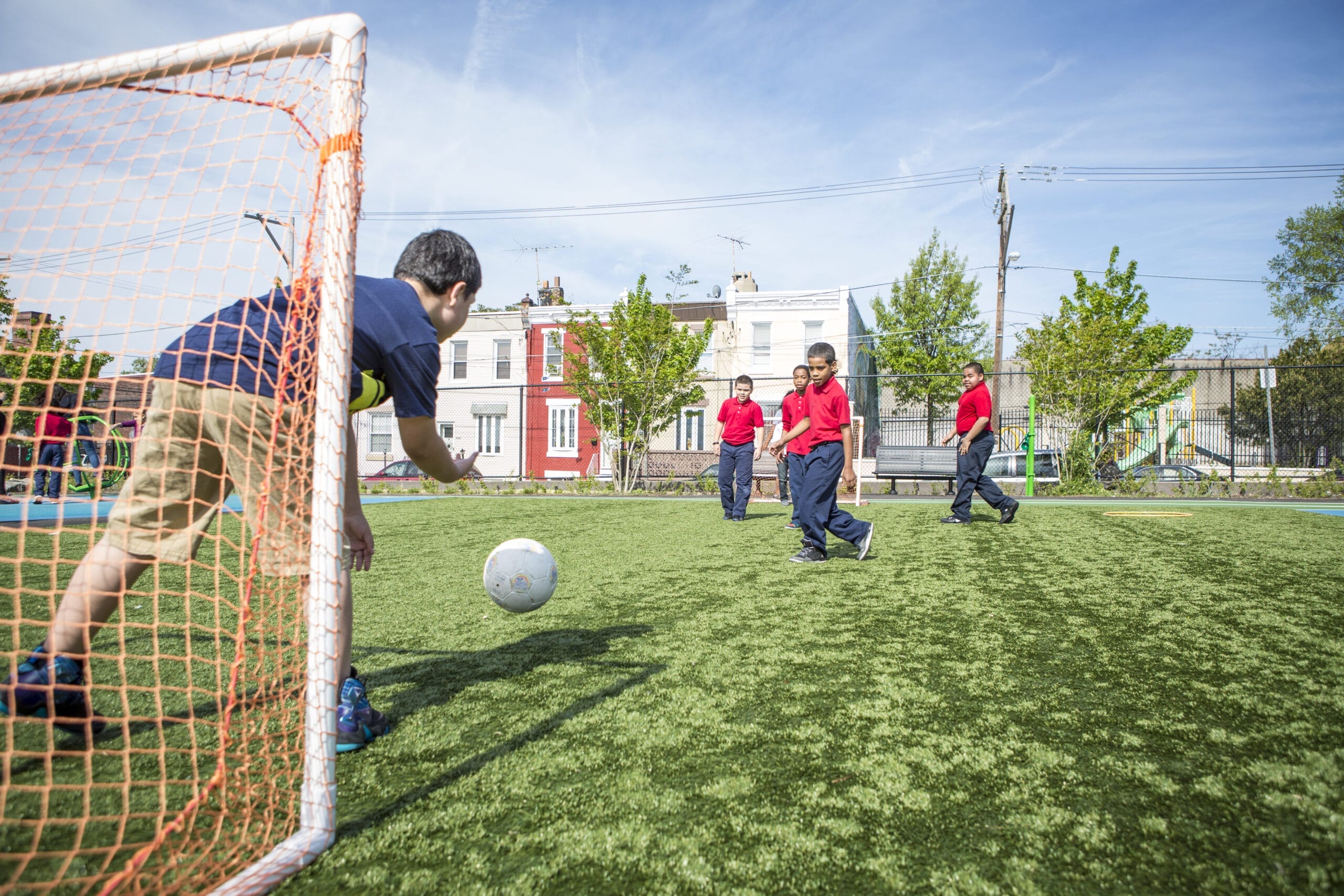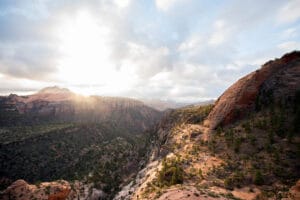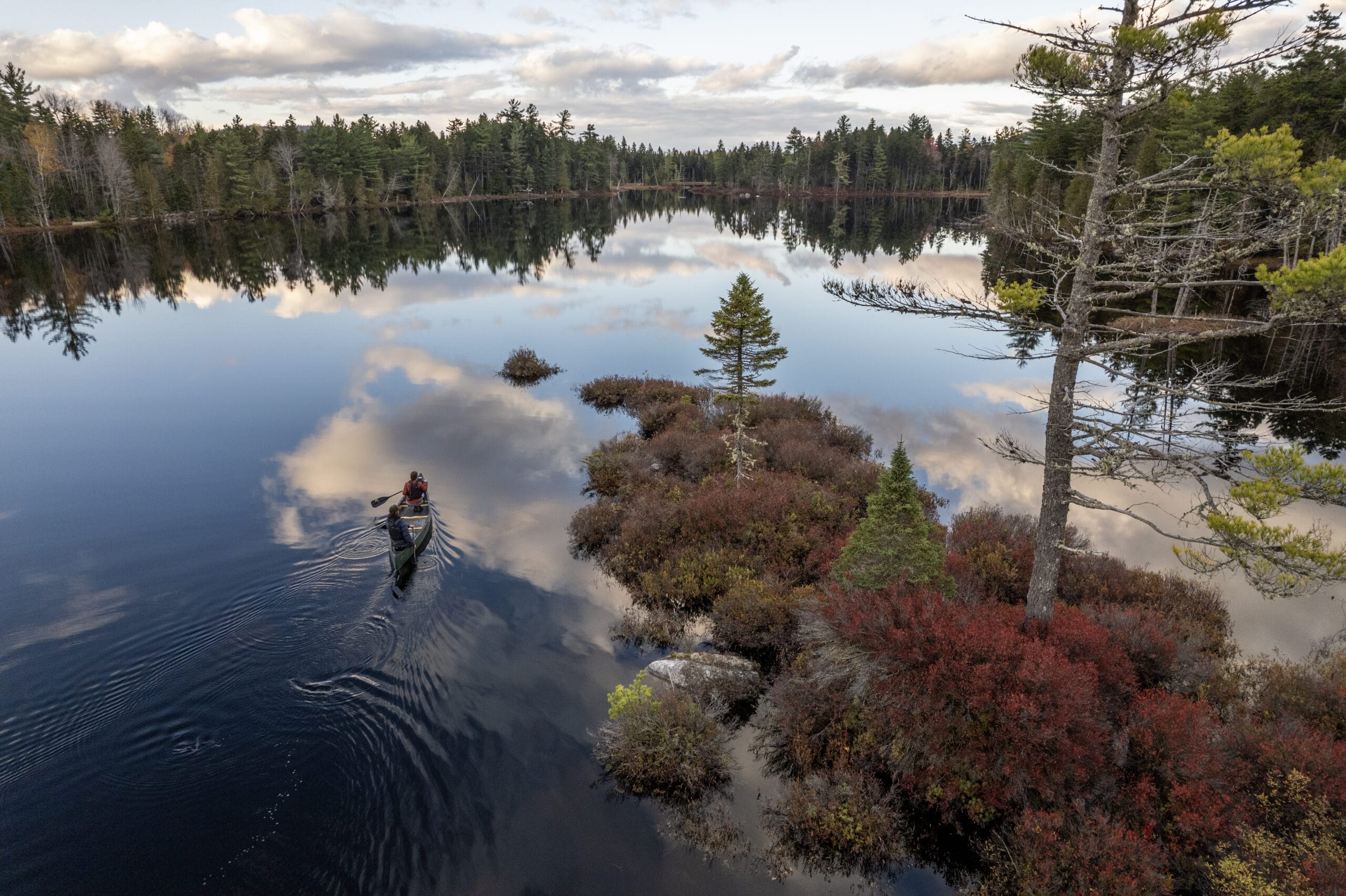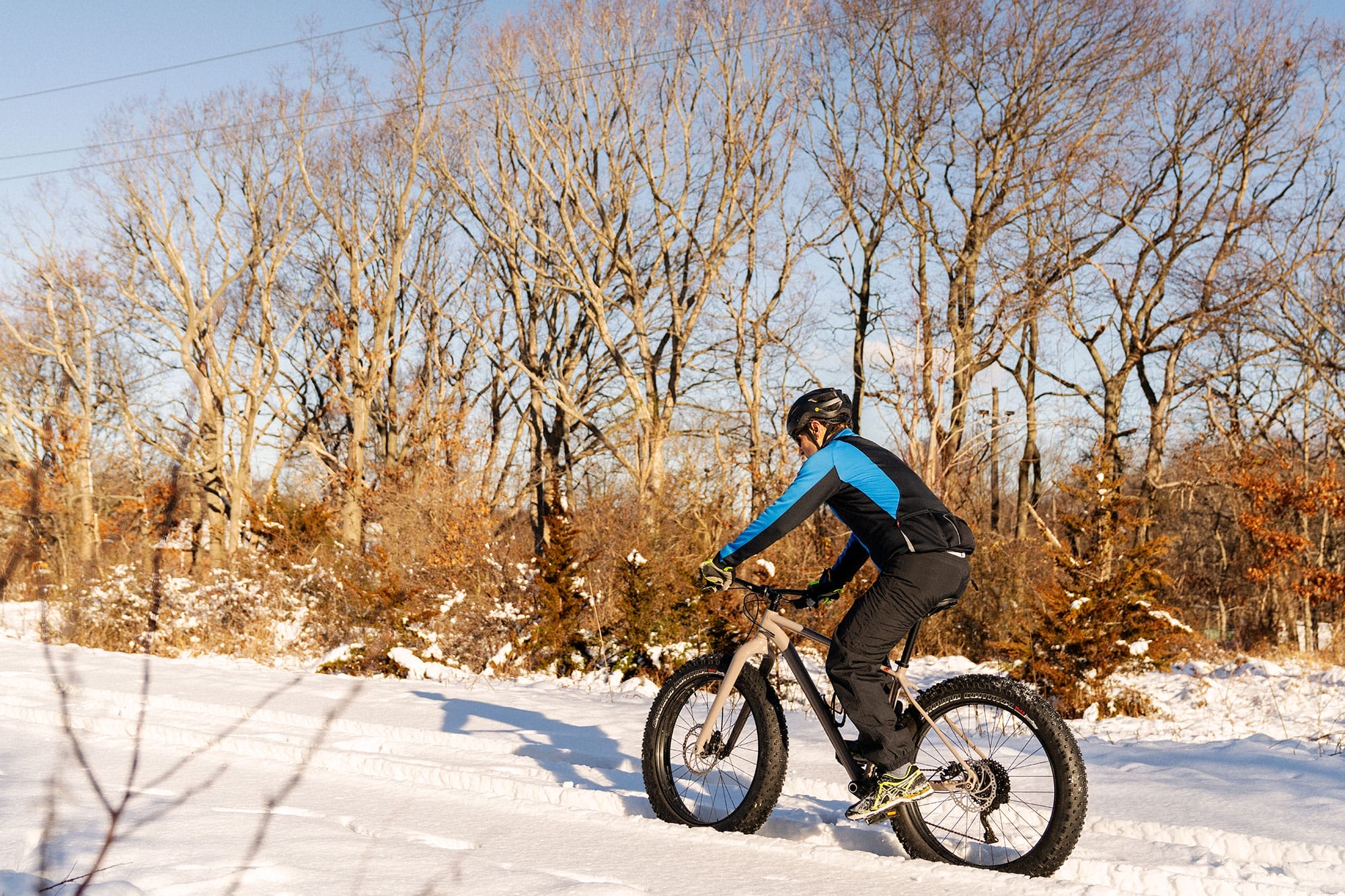Transforming Communities

Kids enjoy playing soccer at the redesigned schoolyard at William Cramp Elementary in Philadelphia. Photo: Jenna Stamm
In September the Washington Post published an article explaining why schools across the country are ripping up playgrounds. In short, it’s because yesterday’s asphalt playgrounds are today’s liabilities, not only for schools but for entire neighborhoods facing extreme heat and flood risk. Replacing that asphalt with porous surfaces that capture stormwater to prevent runoff, planting shade-giving trees, and installing sustainable, nature-rich playgrounds is a cost-effective way to transform vulnerable neighborhoods into climate-resilient ones. In 2024, TPL opened 19 community schoolyards in New York, New Jersey, California, Massachusetts, Pennsylvania, Georgia, and Colorado.
- New York—School of Discovery and School of Journalism and Technology (P.S. 503/506)
- New York—The Bronx School of Young Leaders (P.S. 306/M.S. 311)
- New York—Bx Latin School
- New York—Joseph Pulitzer Magnet School of Innovation and Applied Learning (I.S. 145)
- New York—Vince Lombardi Elementary School (P.S. 204)
- New Jersey—Emanuel Kaplan School (P.S. 229)
- New Jersey—Lincoln School
- Colorado—Knapp Elementary School
- California—Bridges Academy
- California—Jose A. Castellanos Campus
- Georgia—Harper-Archer Elementary School
- Georgia—Centennial Academy
- Georgia—Luther J. Price Middle School
- Georgia—Scott Elementary School
- Massachusetts—Chittick School
- Washington—Jennie Reed Elementary School
- Washington—Stafford Elementary
- Pennsylvania—F. Amedee Bregy School
- Pennsylvania—Alain Locke Schoolyard
- Pennsylvania—Bethune Elementary School

One of many breathtaking views at Zion National Park. Photo: Mike Schirf
Protecting Iconic Landscapes
Were it not for TPL, one of San Francisco’s most scenic, sprawling bay vistas could have become the exclusive eye candy of those rich enough to afford a mansion on Tiburon Ridge. Now, that precious panorama is preserved for everyone to enjoy in perpetuity.
Because TPL purchased a 50-acre inholding and transferred it to the National Park Service, there won’t be a commercial or residential development smack in the middle of Zion National Park.
When we work to “un-checker” Northern California’s forested landscapes, as we did this year by protecting a 7,000-acre Alps2Crags corridor of the Pacific Crest Trail, we address the scenic trail’s five greatest challenges, including climate change and route protection.
A rare property in Minnesota, the Keystone Woods Wildlife Management Area—twice the size of New York’s Central Park and equally rich in natural splendor —is now and forever in the close-to-home recreation portfolio of millions of Twin City residents.
Expanding the Rio Grande del Norte National Monument not only safeguards the picturesque, resource-rich landscape, it also bolsters New Mexico’s outdoor recreation economy by giving locals and visitors access to hunting, biking, camping, and whitewater activities.
Connecting Neighbors
We can’t deny that in 2024, Americans have felt divided and isolated. But we also can’t deny that high-quality park systems possess the transformative power to mend this country’s fraying social fabric. As residents in this year’s top 10 ParkScore® cities know—and as we revealed in The Power of Parks to Strengthen Community special report—the higher a city’s rankings, the more socially connected and engaged its citizens are.
Even small spaces like Denver’s Westwood Pocket Park, which serves the highest concentration of children in the city, can be a bridge in a world of valleys. Something magical happens when local citizens collaborate to design gathering places that reflect their culture and values—through a process that makes everyone feel welcome. That’s why TPL is committed to putting a park within a 10-minute walk of every person in the U.S. This year, hundreds of people in 10 cities helped us celebrate their close-to-home parks on October 10 (10/10), TPL’s National Walk to a Park Day.
Preserving Woods
Even in rural northeast communities known for their natural beauty, access to the outdoors and forested landscapes isn’t a guarantee. This is especially true if those lands are owned privately or permitted for future infrastructure. For residents in Wolcott, Vermont, and Rumford, Maine, woods that are in walking distance of both towns were out of reach to those who wanted to enjoy them until TPL helped residents create community forests. These new public green spaces will serve as tools for economic development and climate resilience while improving opportunities for recreation and community connection.
Meanwhile, after decades of unsustainable logging and development, only 5percent of the South’s longleaf pine forests from Texas to Virginia remain. For the 900 species that are found nowhere else on earth, and for the 90 percent of Santa Rosa County, Florida, residents who rely on drinking water from the Wolfe Creek aquifer, TPL’s protection of Wolfe Creek Forest and Blackwater River State Forest is both life-supporting and quality-of-life enhancing.
Forests, by the way, aren’t only for rural dwellers. Cities are equally reliant on the nature-based benefits of trees and tree canopies, especially in the face of climate change that makes cities hotter and more vulnerable to flooding. Tapping funding from the Inflation Reduction Act, TPL awarded more than $4.5 million to five cities that will incorporate tree canopy into their community schoolyard projects.
Supporting Tribal Partners

Canoeing on Trout Pond in Maine, where we’re working to restore nearly 30,000 acres to the Penobscot Nation. Photo: Chris Bennett
When 31,367 acres of land in the Katahdin region became available for sale, TPL acted quickly to step in as a temporary owner. Our goal? To reconnect Wáhsehtəkʷ (pronounced “WAH-seh-teg”) with the Penobscot Nation while creating much needed southern access to Katahdin Woods and Waters National Monument. In the months and years to come, TPL will work in close partnership with the National Park Service, the Penobscot Nation, and the regional community to return nearly 30,000 acres of land lost to the Penobscot Nation in the 19th century. The move is the largest collaborative land return between a U.S.-based nonprofit and a tribal nation in recent history.
Honoring History
When formerly enslaved African Americans settled in Nicodemus, Kansas, they established a community founded on hope and resilience. Helping to preserve the Nicodemus First Baptist Church building as part of the Nicodemus National Historic Site honors the rich legacy of those settlers and ensures future generations immerse themselves in—touch, feel, see, and hear—an important chapter in American history.
Another defining period in America’s past was the Great Depression, which spawned the Civilian Conservation Corps. Among its many projects was Camp North Bend, which later became Waskowitz Outdoor Education Center. Welcoming thousands of young students every year, it has been an institution in Washington State since 1947, teaching science and environmental education. A conservation easement on 345 of the camp’s forested acres will provide funding to help maintain the camp and expand access to its history, its programs, and its scenic trails (which are open to the public when students are absent).

Thanks to TPL, 257 acres at Pōhākea—including valuable water resources for the community—have been protected in Central Maui. Photo: Scott Drexler
Increasing Climate Resilience
The concept of nature-based solutions to climate change continues to gain awareness, and a new TPL report, The Power of Land Conservation to Address the Climate Crisis, illuminates the latest research and evidence about the importance and cost-effectiveness of land conservation. Each acre of land protected helps build up our carbon stores and makes communities more resilient.
Want examples? Look no further than Maui County, Hawaiʻi, and Marin County, California. The former, devastated by the Lahaina wildfire in 2023, set out to prevent a repeat of that disaster by preserving the 257-acre Pōhākea property with TPL’s support. Public ownership and management of the property will not only reduce the risk of erosion and wildfire, but it will also protect drinking water, preserve cultural resources, and improve access to hiking trails. In Marin, rewilding a former golf course into a community park called San Geronimo Commons will restore its watershed—a win for humans and wildlife—and create a more fire-resilient landscape.

Donate to become a member, and you’ll receive a subscription to Land&People magazine, our biannual publication featuring exclusive, inspiring stories about our work connecting everyone to the outdoors.

